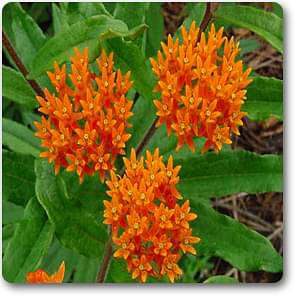
Asclepias tuberosa - Plant
(MRP Inclusive of all taxes)
- Shipping ₹79 for entire order
- Dispatch in 7 days
- Country of origin: India

(MRP Inclusive of all taxes)
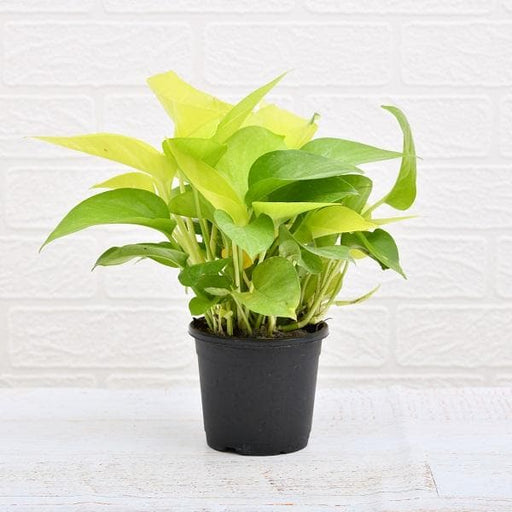 Save 29%
Save 29%
Air Purifier Money Plant with Pot The Air Purifier Money Plant, also known as Pothos or Epipremnum aureum, is a stunning indoor plant that...
View full details
 Save up to 15%
Save up to 15%
Peace Lily, Spathiphyllum - Plant The Peace Lily, scientifically known as Spathiphyllum, is a stunning houseplant celebrated for its elegant white...
View full details
 Save 25%
Save 25%
Jasminum sambac, Mogra, Arabian Jasmine - Plant Jasminum sambac, commonly known as Mogra or Arabian Jasmine, is a fragrant flowering plant...
View full details
 Save 18%
Save 18%
Combo Constituents Includes the Parijat Tree (Night-Flowering Jasmine), a culturally significant plant with fragrant flowers. Description The Pari...
View full details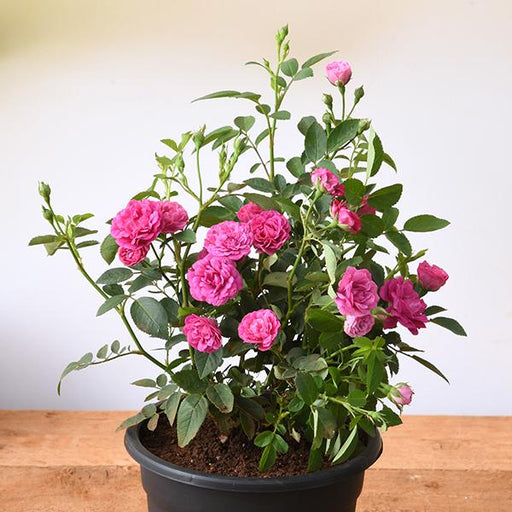
 Save 25%
Save 25%
Miniature Rose, Button Rose (Any Color) - Plant The Miniature Rose, also known as the Button Rose, is a charming and compact flowering plant that ...
View full details Save 25%
Save 25%
Damascus Rose, Scented Rose (Any Color) - Plant The Damascus Rose, also known as Rosa damascena, is a timeless symbol of beauty and romanc...
View full details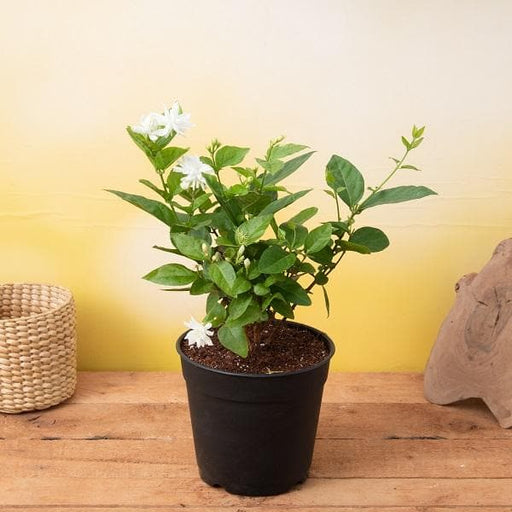
 Save 17%
Save 17%
Beautiful Fragrant Mogra, Arabian Jasmine Plant with Pot The Beautiful Fragrant Mogra, also known as Arabian Jasmine (Jasminum sambac), is...
View full details Save 15%
Save 15%
Pack of Vermicompost and Neem Cake for House Plants Transform your indoor garden with our premium Pack of Vermicompost and Neem Cake, spec...
View full details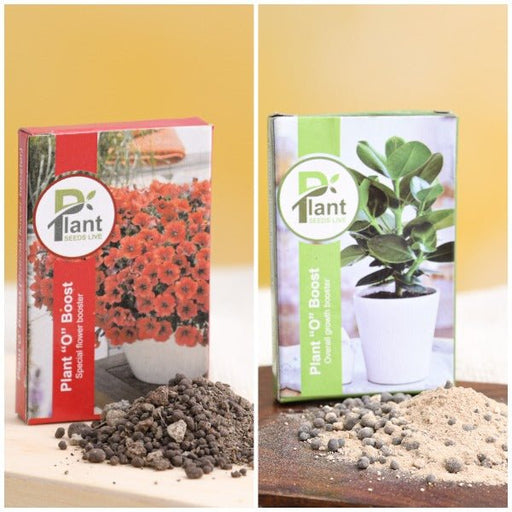
Pack of Plant Growth and Flower Boosters Unlock the full potential of your garden with our Pack of Plant Growth and Flower Boosters! This ...
View full details Save 38%
Save 38%
Combo of Jeevamrut and Neem Raksha for Easy Growth and Protection of Houseplants Transform your indoor garden with our exclusive combo of ...
View full details Save 22%
Save 22%
Plant Nutrients Kit (Pack of 16) for a Healthy Garden Transform your garden into a lush paradise with our Plant Nutrients Kit, featuring 1...
View full details Save 16%
Save 16%
Combo of Top Plant Fertilizers Elevate your gardening game with our exclusive Combo of Top Plant Fertilizers, featuring two bags of premiu...
View full details Save 24%
Save 24%
Pack of 4 Additives to Make Soil Healthy and Nutrient Rich Transform your garden into a thriving ecosystem with our Pack of 4 Additives de...
View full details Save 30%
Save 30%
Transform your gardening experience with our premium Combo of Perlite and Vermiculite. This unique blend is designed to enhance soil aeration and ...
View full details Save 27%
Save 27%
Combo of 2 Vermicompost and Cocopeat - Enrich Your Soil Naturally! Transform your garden into a thriving ecosystem with our Combo of 2 Ver...
View full details
 Save 35%
Save 35%
Best 6 Plants for Perfect Indoor Garden Transform your living space into a lush oasis with our curated collection of the Best 6 Plants for a...
View full details
 Save up to 50%
Save up to 50%
Mini Succulent Garden Pack Transform your space with our Mini Succulent Garden Pack, featuring a delightful collection of 4 any variety beautiful s...
View full details
 Save 30%
Save 30%
5 Best Fragrant Plants Transform your garden or indoor space into a fragrant paradise with our curated selection of the 5 Best Fragrant Plants. Th...
View full details
 Save 24%
Save 24%
Set of 2 Bonsai Looking Grafted Adeniums Transform your indoor or outdoor space with our exquisite Set of 2 Bonsai Looking Grafted Adenium...
View full details Save 45%
Save 45%
Top 4 Die Hard Succulents Pack Transform your indoor or outdoor space with our Top 4 Die Hard Succulents Pack, featuring a curated selecti...
View full details
 Save 30%
Save 30%
5 Best Indoor Plants Pack Transform your living space into a lush oasis with our '5 Best Indoor Plants Pack.' This carefully curated collection fe...
View full details
 Save 25%
Save 25%
Set of 4 Evergreen Air Purifier Plant Pack Transform your indoor space into a lush, green oasis with our Set of 4 Evergreen Air Purifier Pla...
View full details| SrNo | Item Name |
|---|---|
| 1 | Asclepias tuberosa - Plant |
Asclepias tuberosa, commonly known as Butterfly Weed, is a stunning perennial native to North America. This vibrant plant showcases clusters of bright orange to yellow flowers that bloom from late spring to early fall, attracting a plethora of pollinators, especially butterflies. Its deep taproot allows it to thrive in poor soils, making it an excellent choice for xeriscaping and low-maintenance gardens.
What makes Butterfly Weed special is its role as a host plant for the iconic Monarch butterfly. By planting Asclepias tuberosa, you contribute to the conservation of these beautiful creatures, which are facing habitat loss. Additionally, its drought-resistant nature makes it an eco-friendly choice for sustainable gardening.
This plant's special feature is its vibrant, nectar-rich flowers that not only beautify your garden but also support local ecosystems. With its ability to thrive in various conditions, Butterfly Weed is a resilient addition to any landscape.
By planting Asclepias tuberosa, you are not only enhancing your garden's beauty but also playing a vital role in supporting biodiversity. This plant helps improve soil health and provides essential habitat for pollinators, contributing to a healthier ecosystem.
If you think caring for Asclepias tuberosa is like raising a diva, you’re not entirely wrong! This beauty thrives in well-drained soil and loves basking in full sun. Water it moderately, and it’ll reward you with vibrant orange blooms that’ll make your garden the talk of the town. Just remember, it’s not a fan of soggy feet—so keep the waterworks in check!
This plant isn’t just a pretty face; it’s a superhero for pollinators! Asclepias tuberosa attracts butterflies like a magnet, making your garden a fluttering paradise. Plus, it’s a host plant for monarch caterpillars. So, if you want to be the butterfly whisperer of your neighborhood, this plant is your ticket to fame!
Propagating Asclepias tuberosa is like playing matchmaker for plants. You can start with seeds or cuttings, but seeds are the way to go if you want to see the magic unfold. Just sprinkle them in the right season, give them some love, and watch as they sprout into a vibrant colony of orange joy!
Every garden has its villains, and for Asclepias tuberosa, it’s the dreaded aphid! These tiny green monsters can wreak havoc if left unchecked. But fear not! A blast of water or a sprinkle of insecticidal soap can send them packing. Remember, a healthy plant is a happy plant, so keep an eye out for these pesky intruders!
Asclepias tuberosa is a bit of a soil snob. It prefers sandy or loamy soil that drains like a pro. If your garden has heavy clay, it’s time to amend that soil! Mix in some compost or sand to create a luxurious abode for your plant. After all, who doesn’t want to live in style?
This plant is a sun worshipper! Asclepias tuberosa craves full sunlight, so make sure to plant it in a spot that gets at least six hours of glorious sunshine each day. If you try to shade it, it might just sulk and refuse to bloom. So, let it soak up those rays and shine like the star it is!
Get ready for a floral fiesta! Asclepias tuberosa typically blooms from late spring to early summer, putting on a dazzling display of orange and yellow flowers. It’s like nature’s own fireworks show, attracting butterflies and bees to join the party. So, mark your calendars and prepare for a garden celebration!
This plant isn’t just a feast for the eyes; it has a history of medicinal uses too! Traditionally, Asclepias tuberosa has been used to treat respiratory issues and digestive problems. However, before you start brewing herbal teas, consult a professional. After all, we want your garden to be a source of joy, not a trip to the ER!
If you’re looking to spice up your landscape, Asclepias tuberosa is your go-to plant! Its vibrant colors and unique shape can add a pop of excitement to any garden design. Pair it with other perennials for a stunning display, or let it stand alone as a bold statement piece. Your garden will thank you!
This plant is like the ultimate survivor! Asclepias tuberosa is drought-tolerant once established, making it a perfect choice for those who forget to water regularly. It thrives in dry conditions, so you can enjoy a beautiful garden without the guilt of overwatering. Just plant it and let it do its thing!
If you want to turn your garden into a wildlife haven, Asclepias tuberosa is your secret weapon! This plant attracts not just butterflies but also bees and hummingbirds. It’s like throwing a party for all the critters in your area. So, plant it and watch as your garden becomes the hottest spot in town for wildlife!
Pairing Asclepias tuberosa with the right companions can elevate your garden game. Consider planting it alongside coneflowers or black-eyed Susans for a vibrant color palette. These plants not only complement each other visually but also attract a variety of pollinators. It’s a match made in gardening heaven!
Asclepias tuberosa, also known as butterfly weed, is a vibrant perennial that attracts pollinators like a magnet. With its bright orange flowers and sturdy stems, it’s the life of the garden party, providing nectar and a cozy home for butterflies. Who wouldn’t want a plant that’s both beautiful and a social butterfly’s best friend
Growing Asclepias tuberosa is as easy as pie! Just choose a sunny spot with well-drained soil, toss in some seeds or young plants, and watch the magic happen. Water them occasionally, but don’t drown them—this plant prefers to be a little dry. Soon, you’ll have a colorful butterfly buffet right in your backyard!
Asclepias tuberosa thrives in full sun and well-drained soil, like a sunbather on a tropical beach. It loves dry to medium moisture levels, so don’t overwater it—this isn’t a swimming pool party! With the right conditions, it’ll reward you with stunning blooms and a parade of butterflies. Talk about a win-win!
Asclepias tuberosa puts on its floral show from late spring to early summer, strutting its stuff with bright orange flowers. It’s like the plant version of a summer blockbuster! If you want to attract butterflies, this is the time to roll out the red carpet and let the pollinators enjoy the floral fiesta.
Asclepias tuberosa typically grows between 1 to 3 feet tall, making it the perfect mid-sized plant for your garden. It’s not too tall to overshadow your other plants, but tall enough to catch the eye of passing butterflies. Think of it as the charming neighbor who always has a friendly wave and a bright smile!
Yes, Asclepias tuberosa is like the bouncer of the garden, keeping deer at bay with its milky sap and bitter taste. Deer tend to skip this plant in favor of more palatable options. So, if you’re tired of uninvited guests munching on your garden, this plant is your new best friend!
Absolutely! Asclepias tuberosa can thrive in pots, just like a celebrity in a penthouse suite. Ensure the pot has good drainage and place it in a sunny spot. Just remember to water it wisely—too much moisture can lead to root rot. With the right care, your potted butterfly weed will be the talk of the town!
Fear not! Asclepias tuberosa is not considered invasive; it’s more of a well-mannered guest at the garden party. It spreads through seeds but doesn’t take over like some of its rowdier relatives. So, you can enjoy its beauty without worrying about it crashing the party and hogging all the space!
Asclepias tuberosa is a wildlife magnet, attracting butterflies, bees, and even hummingbirds. It’s like a five-star restaurant for pollinators! By planting this beauty, you’re not just beautifying your garden; you’re creating a buzzing ecosystem. Get ready for a lively show of nature’s finest winged friends!
Winter care for Asclepias tuberosa is a breeze! Simply cut back the dead stems in late fall and let nature do its thing. This plant is hardy and can withstand cold temperatures, so no need for a cozy blanket. Just sit back, relax, and let it hibernate until spring brings back the butterflies!
Yes, Asclepias tuberosa has a history in herbal medicine, often used for respiratory issues. However, it’s not your average herbal remedy; it’s more of a niche player. Always consult a professional before diving into herbal treatments. Remember, just because it’s pretty doesn’t mean it’s a cure-all—use it wisely!